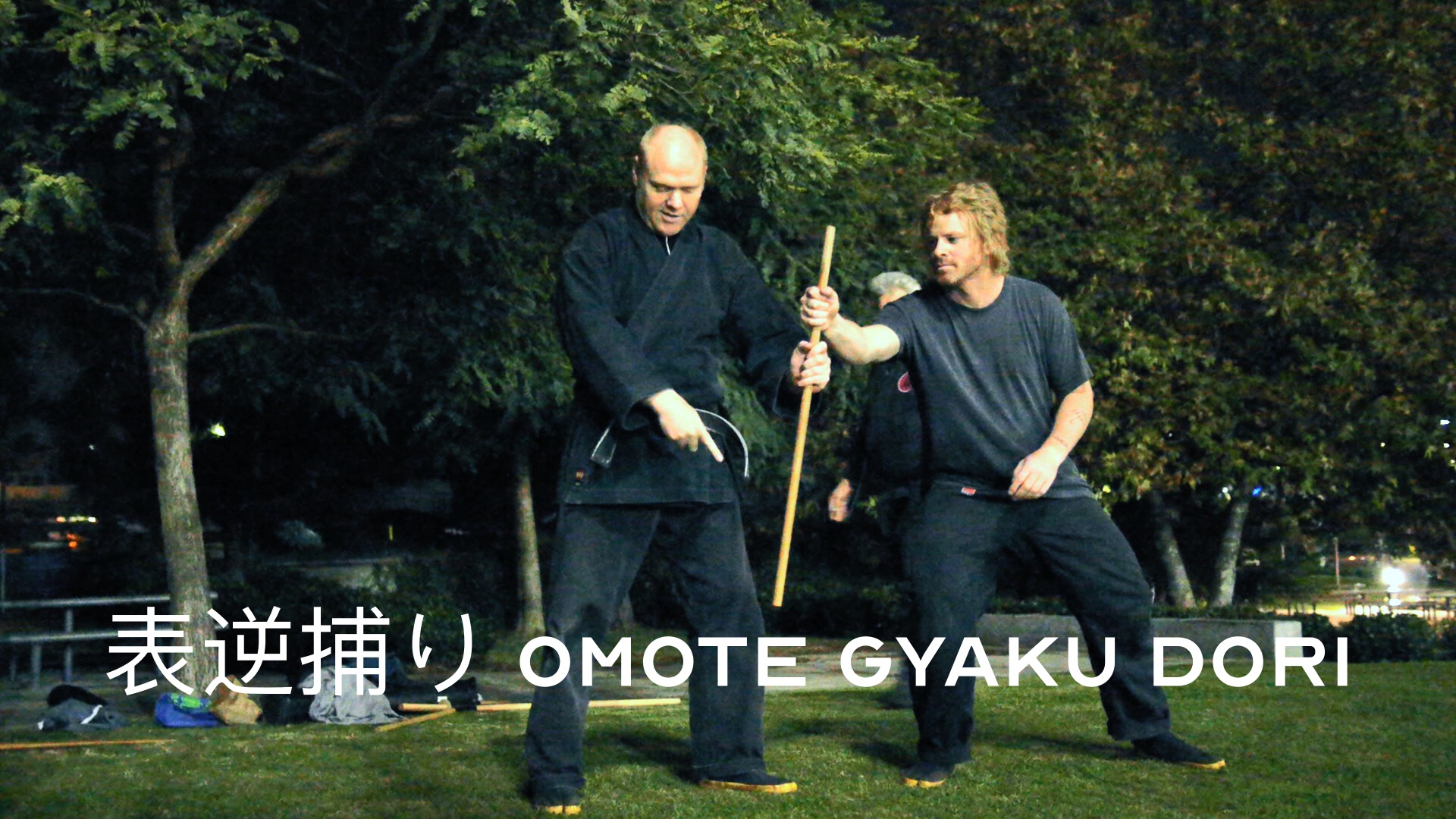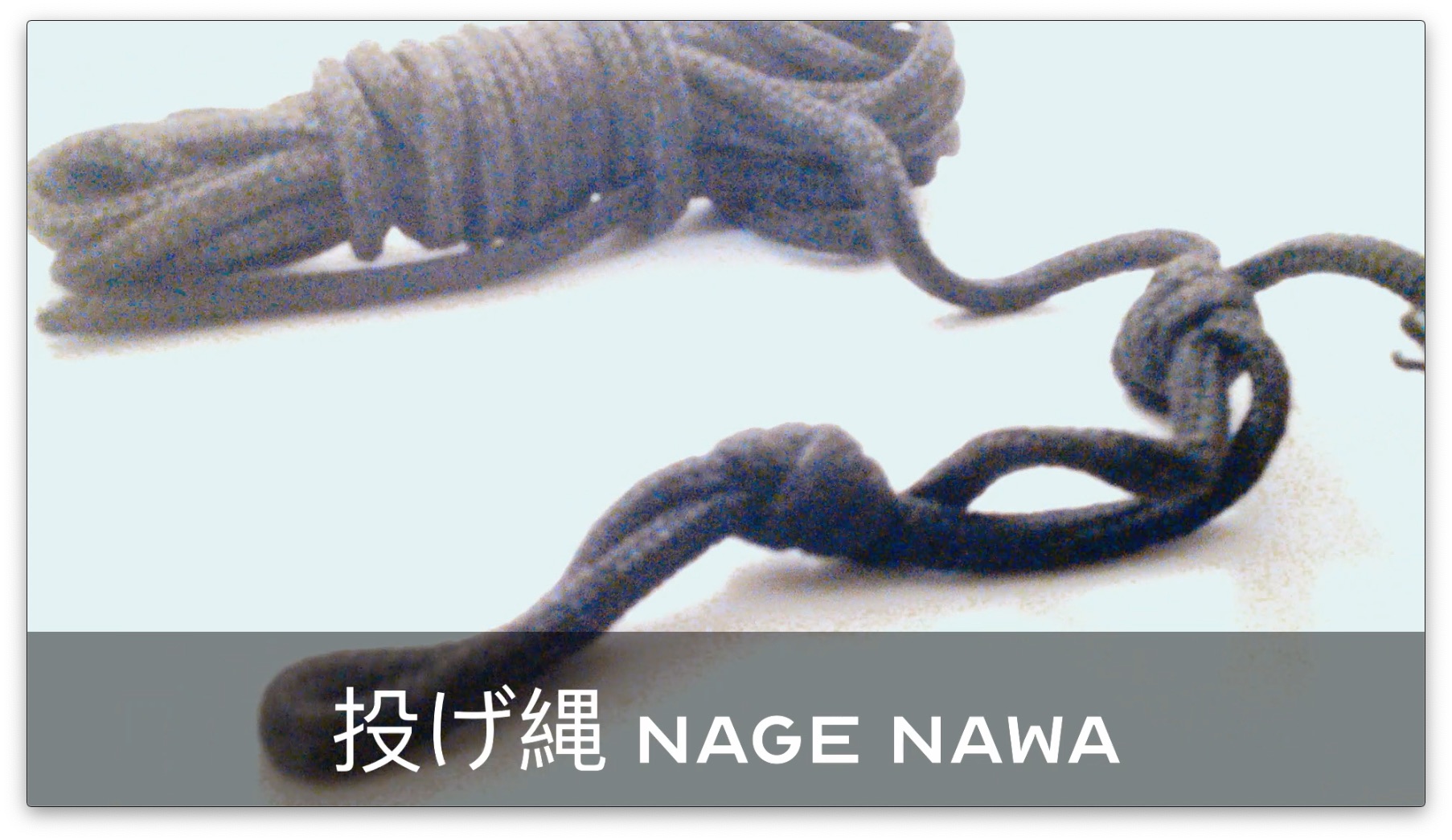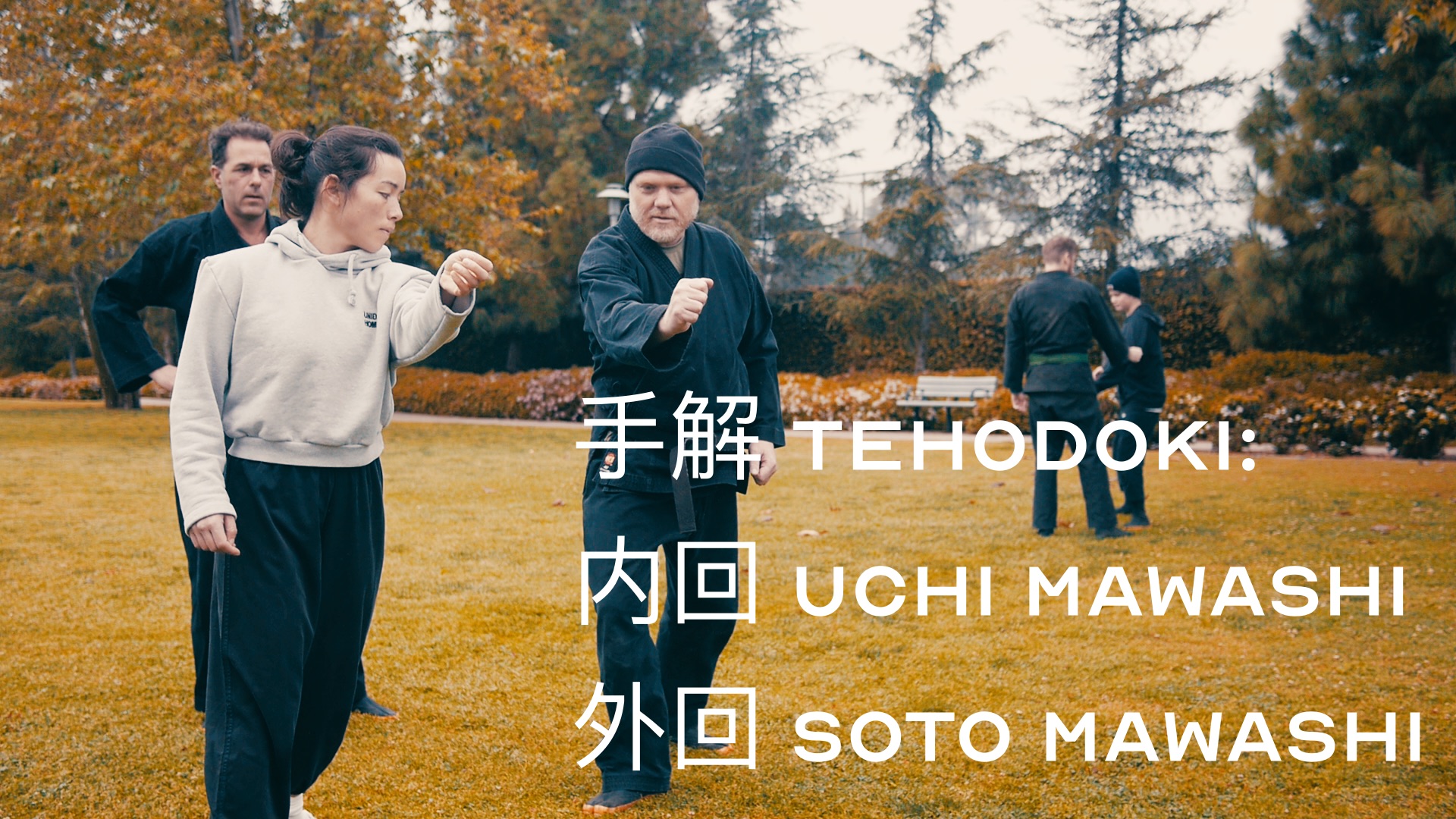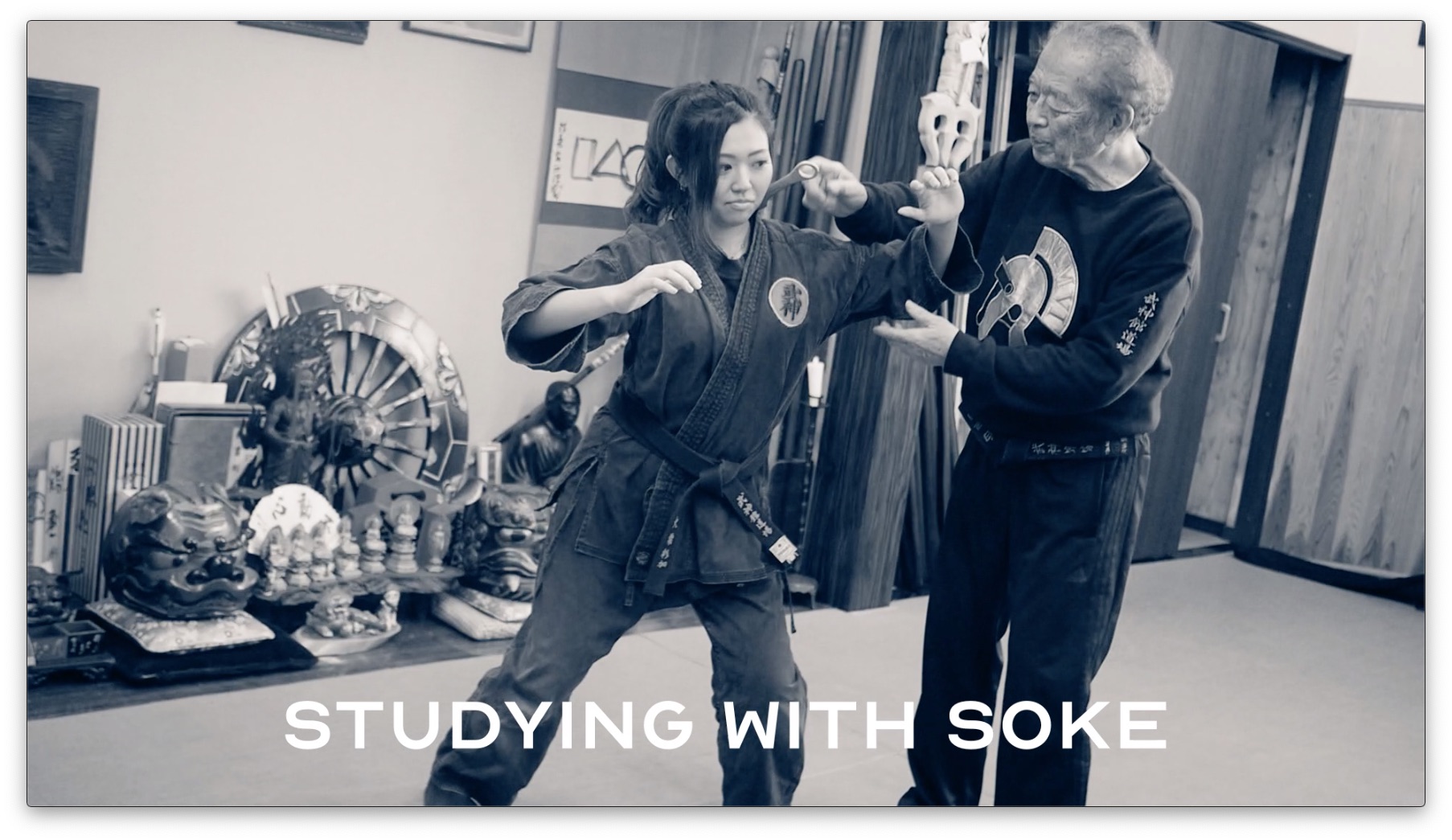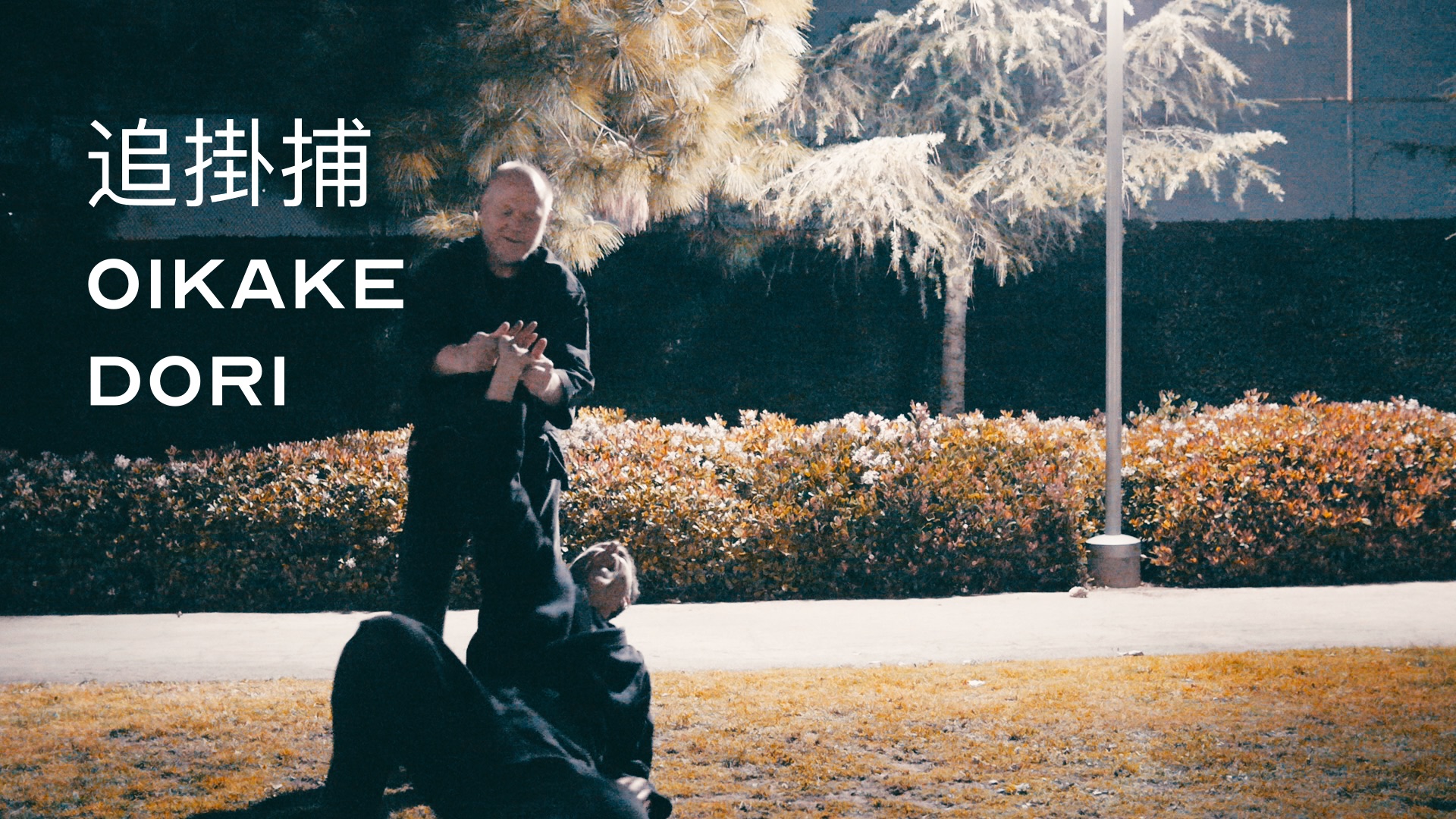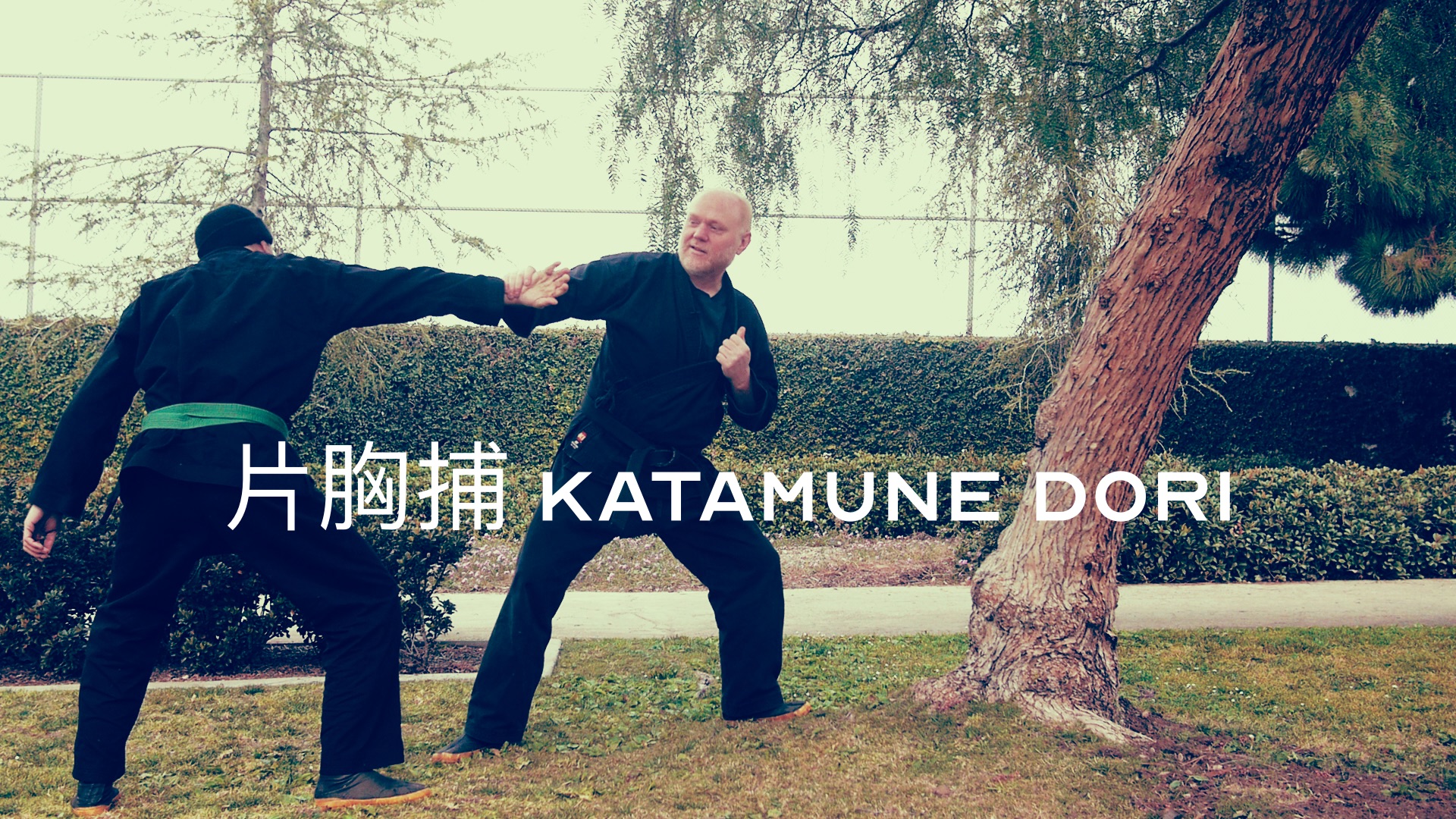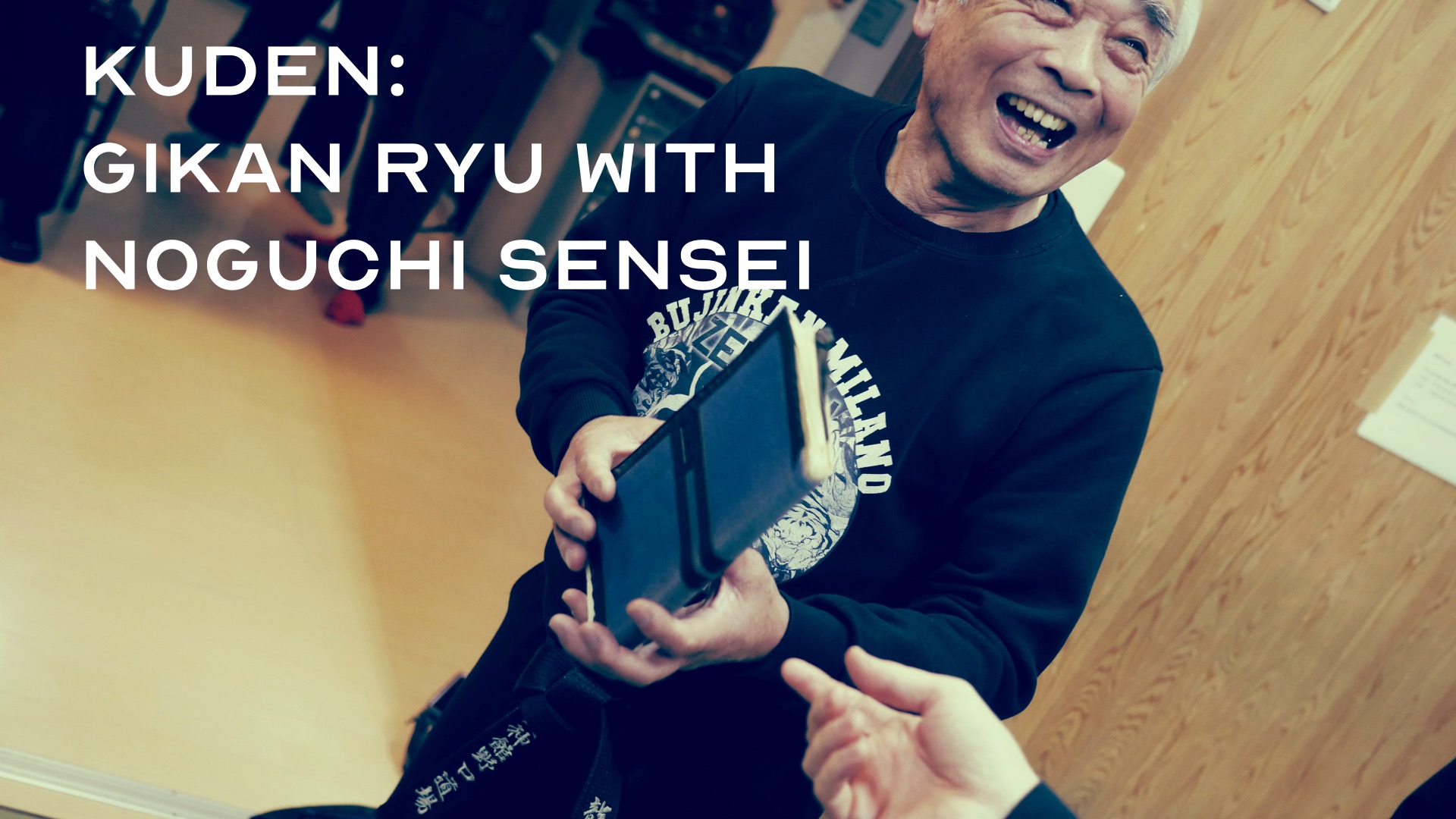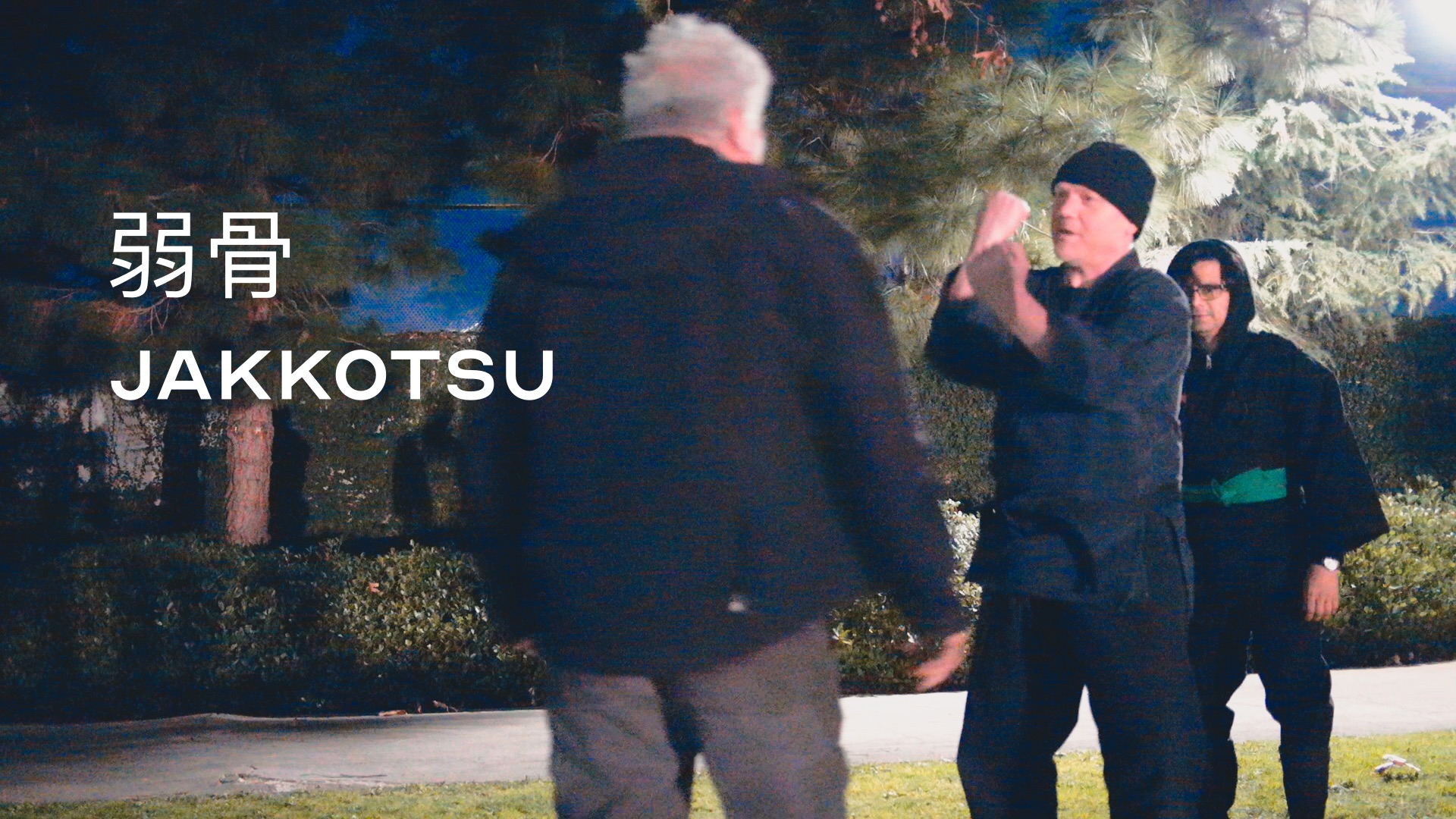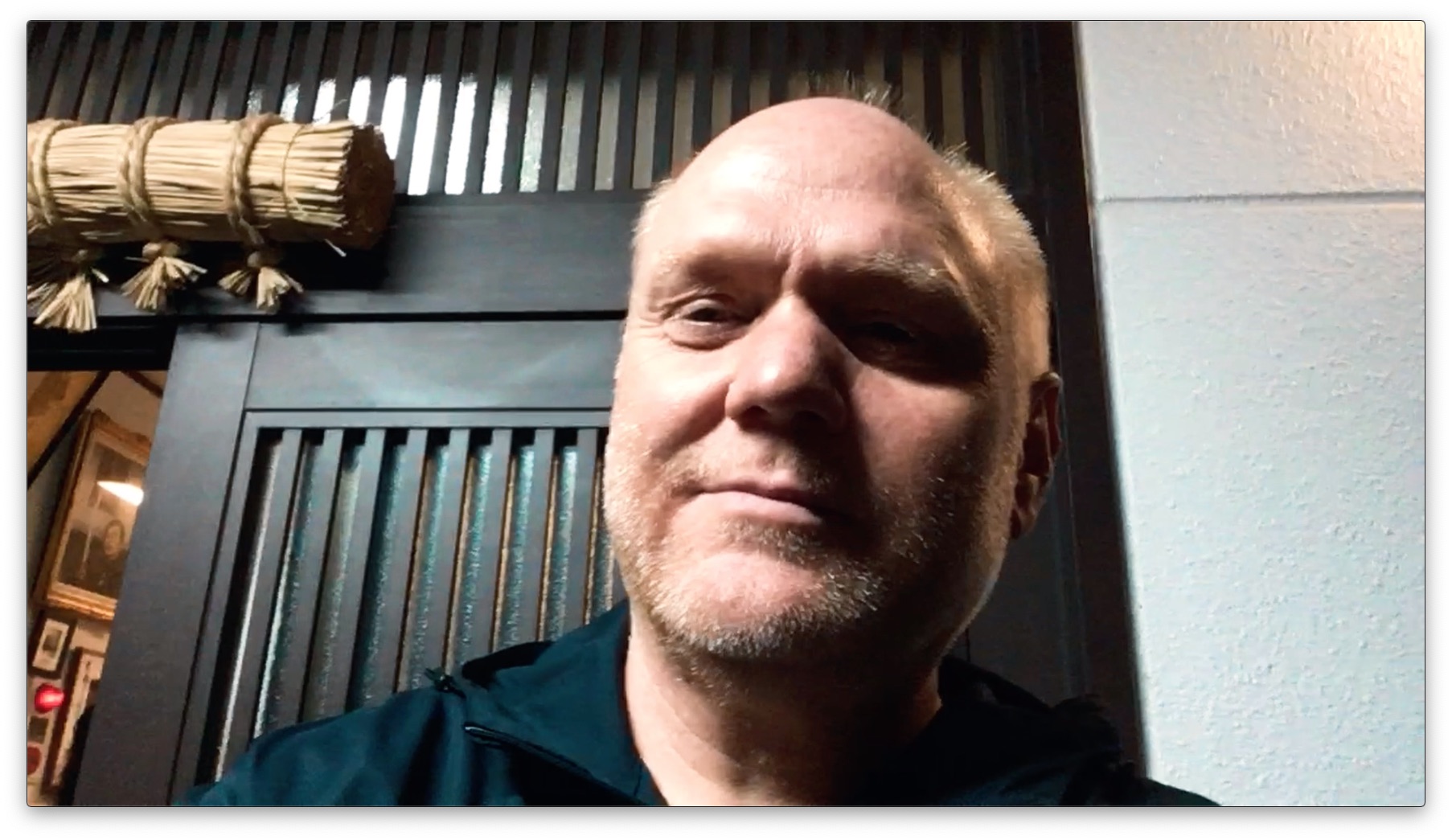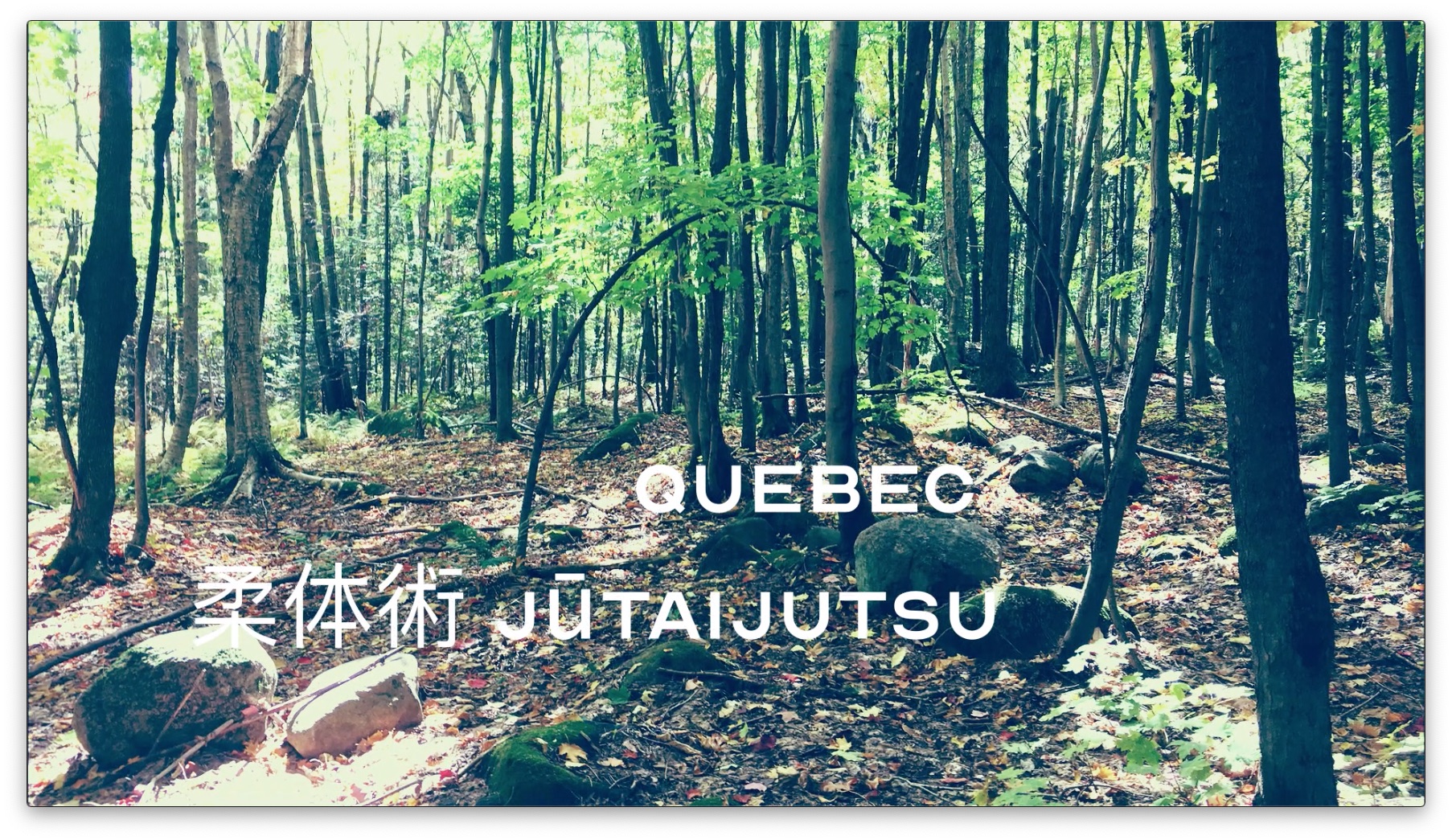Bujinkan Hanbo Waza 表逆捕り Omote Gyaku Dori
my Bujinkan video exploring the hanbo waza 表逆捕り omote gyaku dori. First, we warmed up with a three distance striking drill with the hanbo. This striking sequence is not often studied in the average dojo.
I began class with 表逆捕り omote gyaku dori. This is a weapon retention waza. The opponent tries to grab a hold of your hanbo. Then you use this to trap him.
投げ縄 Nage Nawa
I am using this time to study two types of 投げ縄 Nage Nawa. That means rope throwing. This is normally done to trap or ensnare an opponent. But it may also be a distraction or a form of metsubushi.
Bujinkan 手解 Tehodoki: 片手内回 Katate Uchi Mawashi and 片手外回 Katate Soto Mawashi
my Bujinkan video exploring 手解 Tehodoki with 片手内回 Katate Uchi Mawashi and 片手外回 Katate Soto Mawashi. The first kanji in tehodki means “hand”. The second comes from 解ける hodokeru which means to to come untied, to come apart, or unravel. But we normally translate tehodoki as wrist escapes.
Bujinkan Kuden: Being Uke for Hatsumi Sensei
In this episode of Bujinkan Kuden, first we have an after training discussion about some details of 追掛捕 Oikake Dori. Then we focus on Hatsumi Sensei’s taijutsu. I also share 3 stories from my experience being Uke for Soke Hatsumi in Japan.
Bujinkan Kata 追掛捕 Oikake Dori
my Bujinkan video exploring the Kata 追掛捕 Oikake Dori. The name of this kata means to chase and capture. We follow our opponent and initiate a surprise attack from behind.
Bujinkan 片胸捕 Katamune Dori
exploring 片胸捕 Katamune Dori. The name of the kata is descriptive of the attack. It means grabbing one side of the mune, or chest. This is 高木揚心流柔体術 Takagi Yoshin Ryū Jūtaijutsu, so the response will reflect the strategies from that school.
Use the cover unique to the school. Then break the grip. Not with your hands but with your body! When I trained with Hatsumi Sensei in December, he described it as seperating yourself from the attack. This can be understood on many levels. In fact, at one point he said we must become “almost like a (妖怪 youkai) spirit or a monster.”
Bujinkan Kuden: Gikan Ryu with Noguchi Sensei
Less than 20 students were waiting for him to bow in. Noguchi Sensei did so promptly as is his custom. Then he announced we were doing Gikan Ryu kata.
I was surprised. In more than 30 years I have not been shown these from any teacher. In between kata, Noguchi Sensei showed me a tattered notebook with the kata handwritten in a numbered sequence. He told me these were his actual notes from more than 40 years ago when Hatsumi Sensei taught these only to him.
Bujinkan 弱骨 Jakkotsu
my Bujinkan video exploring 骨法術 koppōjutsu and 弱骨 jakkotsu. We began by reviewing the fourth waza I studied with Noguchi Sensei in Japan last month. The three kicks in this form really attack the structure of the opponent.
Bujinkan Kata 日撃 Nichigeki in Québec
my Bujinkan video exploring the Kata 日撃 Nichigeki in Québec. I began with a demo of the basic form. I chose this kata because it is simple in appearance, yet allows exploration of many advanced topics I had been studying in Japan.
Bujinkan Japan Report Fall 2019
My Bujinkan video with the latest training updates from Japan. The weather in Chiba prefecture has been cold and rainy. I have been studying with many instructors, but this report primarily focuses on what is happening in Hatsumi Sensei’s classes.
Bujinkan 柔体術 Jūtaijutsu in Québec
my Bujinkan video exploring basic 柔体術 Jūtaijutsu. We began with the basic jūtaijutsu shuffle and then quickly made it advanced by going nonlinear. I showed advanced use of the kukan to break the balance.
Bujinkan 空の型 Kū No Kata in Québec
空の型 Kū No Kata. The core lesson is expressed with 虚実 kyojitsu. The interchange of truth and falsehood is what makes this kata. So I expressed the kyo, normally the hand wave of ku no kata, as jitsu. It becomes real as a shako ken. I then flipped this and made the kick into the illusion.
